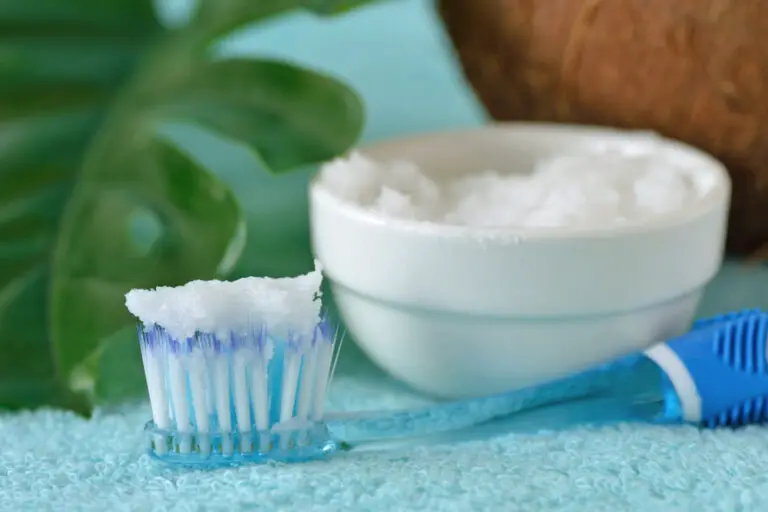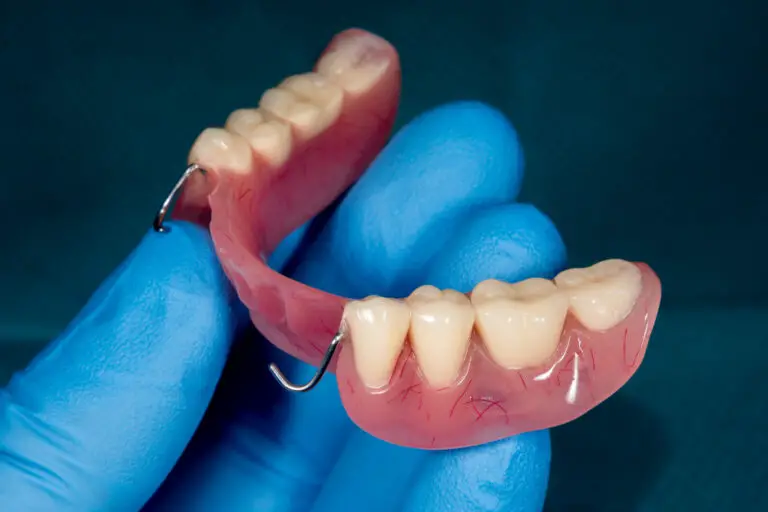What is calculus?
Calculus, also known as tartar, is a form of hardened dental plaque that builds up on teeth. It is caused by minerals present in saliva combining with plaque deposits and crystallizing into a hard, calcified substance that sticks firmly to the tooth’s surface. Unlike soft plaque that you can brush away, calculus is permanently bonded and requires professional removal.
Over time, calculus accumulates in tiny crevices, along the gumline, and in hard-to-reach areas that aren’t properly cleaned. This calcified gritty deposit is chalky and abrasive. As more plaque and bacteria adhere to existing calculus, this leads to irritation and inflammation of the gums. Removing calculus is important to prevent gingivitis from worsening into advanced periodontal disease.
How calculus forms
Calculus develops through the following process:
- Plaque bacteria in the mouth produce acids as a byproduct of metabolizing sugars and starches in the diet. This erodes the enamel, creating microscopic grooves and pits.
- Plaque starts to collect in these pits and grooves, attaching tightly. Plaque contains bacteria, proteins, and food debris.
- Saliva bathes the teeth and contains mineral salts – mainly calcium phosphate. These minerals start to crystallize and deposit within the plaque.
- Over time, these crystalline deposits harden and fuse with the plaque, transforming into a hard, calcified mass fused to the teeth – this is calculus.
- More and more plaque accumulates on top of existing calculus, providing the perfect environment for additional calculus to form.
- The rough, porous surface of calculus makes removing plaque difficult, exacerbating the problem.
Where does calculus form?
Calculus tends to accumulate in specific problem areas where maintaining thorough cleaning is difficult:
- Along the gumline where teeth meet gums
- In cracks, imperfections, and grooves on chewing surfaces
- Behind the lower front teeth near salivary gland openings
- Around dental restorations like fillings, crowns, and braces
- Below the gumline where it cannot be seen
Subgingival calculus under the gums provokes the most severe inflammatory response in surrounding tissues.
Can I remove calculus myself at home?
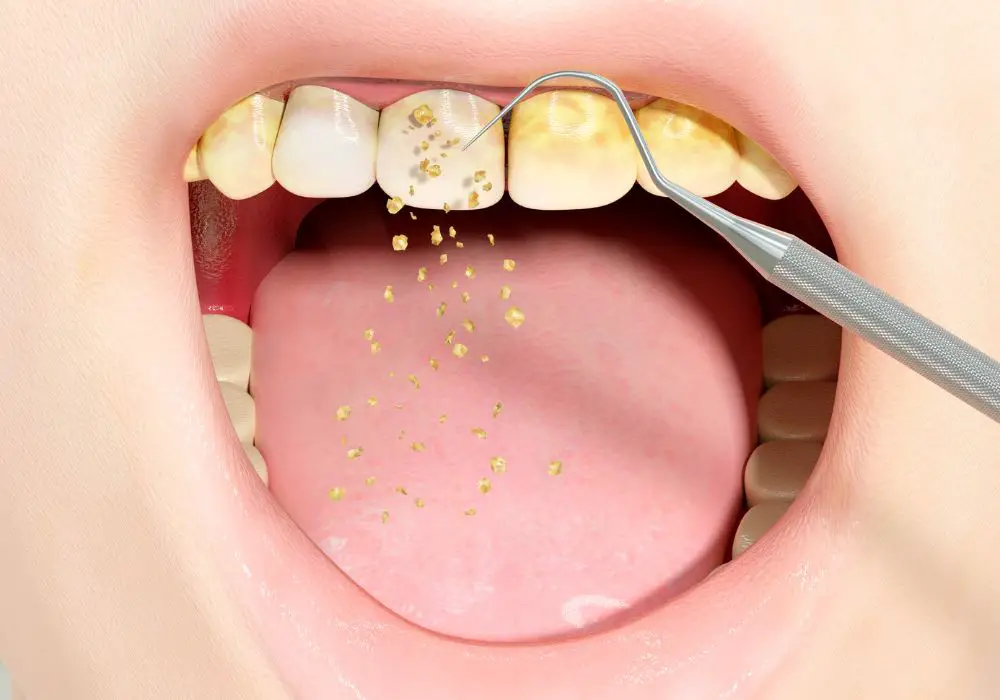
It is not advisable to attempt removing calculus on your own at home. This is because:
You cannot fully remove subgingival calculus
Subgingival calculus builds up underneath the gums where you cannot properly see or access it to remove it. Yet this hidden calculus irritates the gums and causes the most dental problems.
Special tools like curettes, irrigators, and ultrasonic scalers are required to thoroughly remove subgingival calculus down to the bottom of each periodontal pocket. Dentists have the specialized equipment and training needed to completely remove calculus above and below the gumline in a meticulous manner.
Without removing all subgingival deposits, gum inflammation and progressive periodontal damage will persist.
You risk damaging tooth enamel
It is very easy to accidentally scrape away and permanently damage the enamel surface while trying to chip off superficial calculus with home tools. Enamel does not grow back – once damaged, the teeth become more prone to sensitivity, cavities, and decay.
Dentists have precise control and skill using specialized calculus-removal instruments to avoid damaging the enamel. The fine tips of their scalers allow calculus deposits to be lifted off while leaving the enamel intact and smooth.
Home techniques only remove small amounts
Using blunt objects or abrasive toothpastes at home may seem to work initially, but these methods only remove tiny, superficial pieces of calculus. Larger chunks remain cemented to the teeth, and mineral salts in saliva quickly rebuild on top within days.
Even scraping tools like dental picks predominantly remove dental plaque rather than the firmly attached calculus. Any small bits of calculus dislodged are unlikely to be cleaned away fully before re-calcifying.
You won’t address the full extent of the problem
It is difficult to spot and accurately identify all areas of calculus buildup on your own teeth. Dentists carefully examine the entire mouth using dedicated calculus detection tools. They methodically scale each tooth surface and under the gums to eliminate every trace of calculus.
Without a professional assessment, you will likely miss areas of calculus. These deposits would continue worsening dental problems. Even if you manage to remove some visible calculus temporarily, the untouched buildup below the gumline will persist.
Professional calculus removal techniques
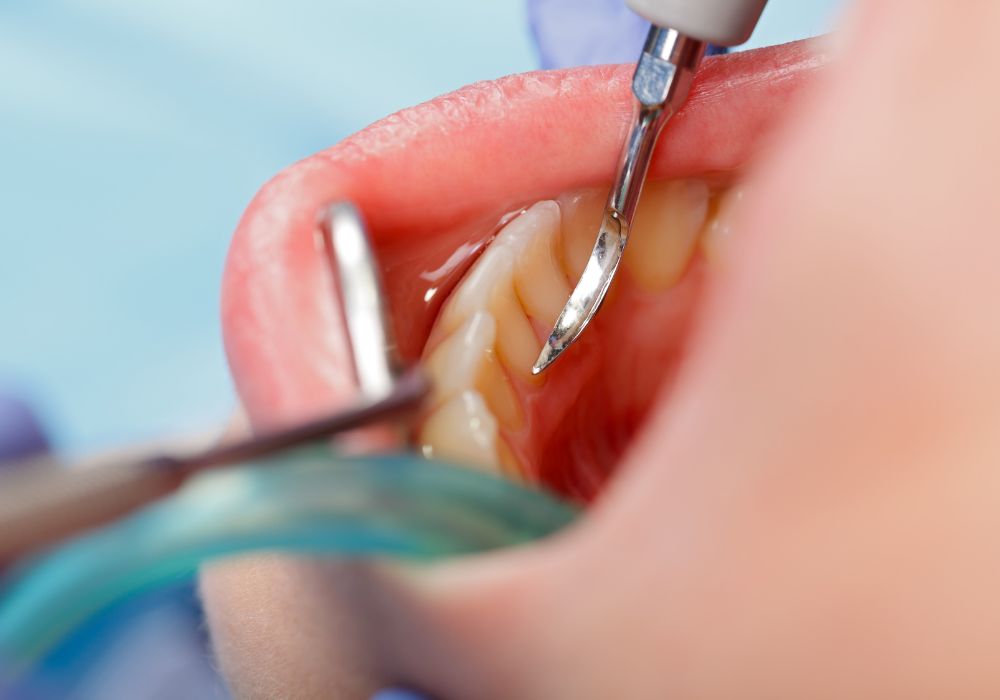
To safely and effectively remove all calculus on the teeth as well as below the gums, professional techniques and tools are required:
Hand scalers
Sharp, fine-tipped dental scalers allow calculus to be precisely chipped off while avoiding damage to tooth surfaces. Advanced scalers have ergonomic handles for comfort and precision control. The dentist methodically scales each tooth above and below the gumline to leave surfaces smooth.
Ultrasonic scalers
These specialized scalers use high-frequency vibrations to help break up and dislodge calculus deposits. This enables the dentist to quickly and easily remove loosened bits of calculus. Ultrasonic scalers incorporate irrigating water to flush away debris.
Dental lasers
Advanced dental lasers provide a comfortable and fast way to detach and vaporize calculus. The laser’s focused energy breaks the bonds adhering calculus to the teeth, allowing easy removal by the hygienist. Lasers kill bacteria as well.
Subgingival curettage
After initial calculus removal, the dentist may perform subgingival curettage to extract any remaining traces from below the gumline. A set of specialized narrow curettes are used to meticulously clean even the deepest periodontal pockets.
Rubber polishing cups
These are used with polishing paste to smooth over the cleaned tooth surfaces. Polishing removes any leftover scraped enamel and restores luster.
With professional calculus removal techniques, the teeth can be thoroughly cleaned down past the gumline quickly and comfortably, without any lasting damage.
Potential risks if calculus is left untreated
Allowing calculus deposits to build up substantially comes with considerable risks:
- Increased dental plaque: The rough surface of calculus aggravates plaque accumulation and makes cleaning less effective. Oral bacteria rapidly multiply, increasing acid production near the gums.
- Halitosis: Volatile sulfur compounds released from bacteria on calculus cause unpleasant breath odor. This worsens with more plaque buildup.
- Gingivitis: Calculus irritates the gums, provoking inflammation, redness, swelling, and tendency to bleed – the signs of gingivitis. Untreated gingivitis can lead to…
- Periodontitis: Chronic gingival infection destroys the tissues and bone supporting the teeth. This advanced “periodontal disease” can ultimately lead to loose teeth and tooth loss.
- Dental caries: Plaque lingering near calculus deposits promotes cavity formation, especially around the gumline and between teeth.
- Tooth sensitivity: Loss of gum and bone around the teeth due to periodontitis results in sensitive, exposed tooth roots prone to pain.
- Abscesses: Severe infections in the gums and jawbone cause painful abscesses that can spread.
- Systemic issues: Oral bacteria entering the bloodstream through inflamed gums may potentially contribute to stroke, heart disease, diabetes, and pregnancy complications.
Keeping up with professional dental cleanings and calculus removal is essential to avoid such detrimental oral and overall health issues.
When should I get a professional dental cleaning?
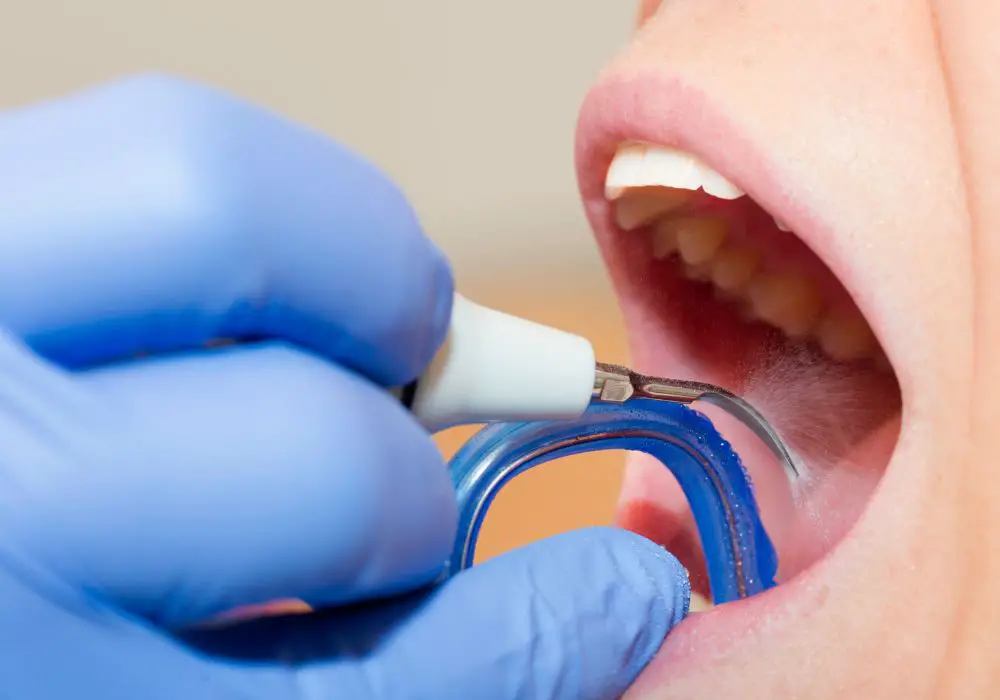
Regular professional cleanings prevent calculus and plaque from accumulating extensively between visits:
- Children should have dental cleanings every 6 months from the time their teeth first emerge.
- Healthy adults generally require professional cleanings every 6 months for optimal oral health and to minimize calculus buildup.
- Elderly individuals often benefit from more frequent cleanings, such as every 3 to 4 months, due to increased calculus accumulation.
People prone to heavier calculus deposits may need dental cleanings as often as every 3 months to control buildup. Always consult your dentist, as they can best evaluate your rate of calculus formation and necessary cleaning frequency.
Ideally, you should have your teeth professionally cleaned and examined by your dentist or hygienist at least twice per year. This interval prevents substantial calculus accumulation and allows gingivitis to be detected in its early reversible stages if present.
Inform your dentist immediately if you notice calculus returning soon after a cleaning. Quickly rebuilding calculus likely signals the need for more frequent dental maintenance.
What happens during a professional dental cleaning?
Visiting the dentist for regular calculus removal and teeth cleaning involves the following steps:
- The dentist first performs a thorough examination of your teeth, gums, and mouth to check for plaque, calculus, decay, and signs of oral disease.
- Loose plaque is removed from all tooth surfaces using a scaling instrument similar to a scraper. This is like a deep cleaning beyond normal brushing.
- Hardened calculus deposits are then carefully scaled away using specialized dental instruments and techniques. Ultrasonic vibrations may help break up calculus buildup.
- Your bite is checked and adjusted as needed.
- If necessary, the dentist may perform subgingival curettage to clean beneath the gums more deeply.
- Teeth are then smoothed and polished to remove any remaining scraped enamel and restore their natural shine.
- A fluoride treatment is applied to help protect against cavities.
- Your dentist provides customized home care instructions – such as correct brushing, flossing, and use of mouthwash – based on your specific needs.
Regular dental cleanings remove accumulated calculus before it can severely damage your oral health. Calculus removal is painless and non-invasive when performed by a skilled dental professional. Cleanings take only 30-60 minutes and leave your teeth looking and feeling thoroughly refreshed.
Frequently Asked Questions
1. How can I prevent calculus from reforming quickly after it’s removed?
- Maintain impeccable oral hygiene with brushing, flossing, and antimicrobial mouthwash to reduce plaque buildup.
- Use toothpaste and mouthwash containing stannous fluoride, as this has been shown to reduce calculus formation.
- Make dietary modifications to avoid heavy starch and sugar intake that feed plaque bacteria.
- Ask your dentist about applying dental sealants to smooth over grooves and crevices prone to calculus accumulation.
- Quit smoking, as this significantly worsens calculus buildup.
- Follow up promptly with scheduled cleanings every 6 months.
2. Why does calculus seem to re-form so quickly after professional cleaning?
Trace amounts of plaque and minerals remain embedded in microscopic pits and fissures in the enamel after cleaning. Saliva minerals rapidly consolidate and rebuild on these plaque remnants left behind. Sticking closely to your recommended cleaning schedule helps combat this process.
3. How can I make calculus removal more comfortable?
- Inform your dentist you are sensitive so they can take extra care.
- Request application of a desensitizing gel prior to the procedure.
- Avoid tobacco and caffeine before cleanings as these aggravate sensitivity.
- Breathe deeply and relax your muscles during the procedure.
- Listen to music on headphones to help relax.
- Ask your dentist about using anesthesia or nitrous oxide for sedation if you have high sensitivity.
4. Why is calculus worse for people with braces?
The brackets and wires of orthodontic braces provide more surface area for plaque and calculus accumulation. Food and debris easily become trapped by braces. Using specialized flossing and brushing techniques are required to clean effectively around braces, but meticulous hygiene can be difficult. More frequent professional cleanings are key to controlling calculus with braces.
5. Are dental lasers better than scalers for removing calculus?
Lasers are efficient at breaking up calculus, but they cannot physically scrape and detach all deposits. Most dentists find that using lasers in combination with hand and ultrasonic scalers is optimal for thorough calculus removal with maximum patient comfort. The laser loosens calculus so that hand tools can quickly and easily remove all traces.
Conclusion
While it may seem tempting to try removing built-up calculus deposits at home, this typically only addresses a small portion of calculus and risks damaging your enamel. Leaving calculus untreated allows plaque to thrive, potentially leading to gingivitis, tooth decay, and other oral health issues. Regular professional cleanings are essential for safely removing all built-up calculus above and below your gumline. Be sure to get a thorough dental calculus removal at least twice a year for optimal oral health!

